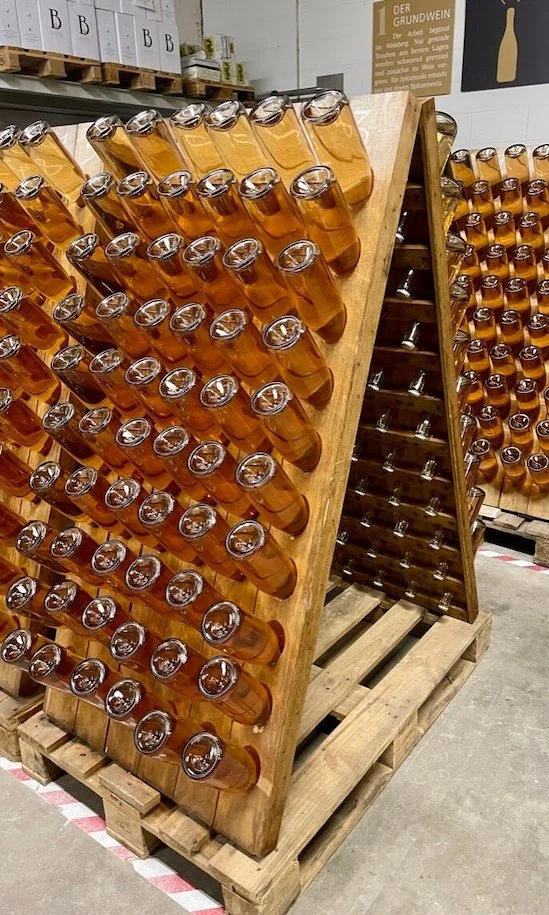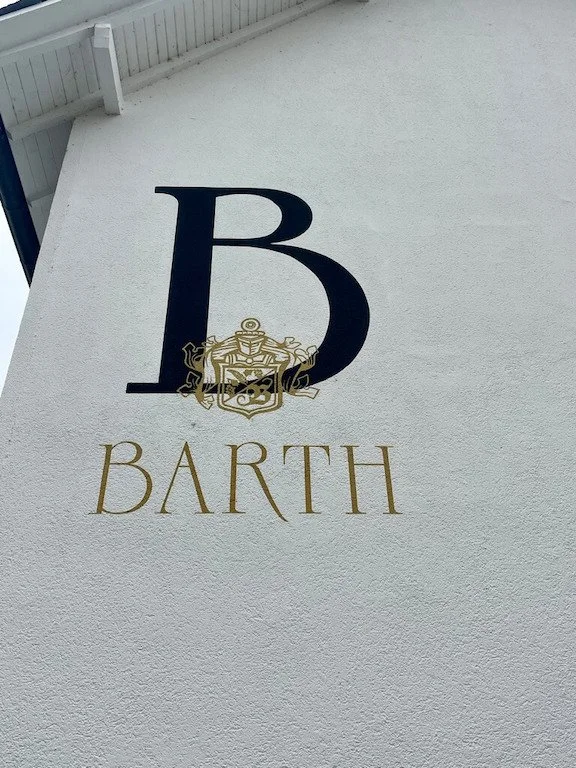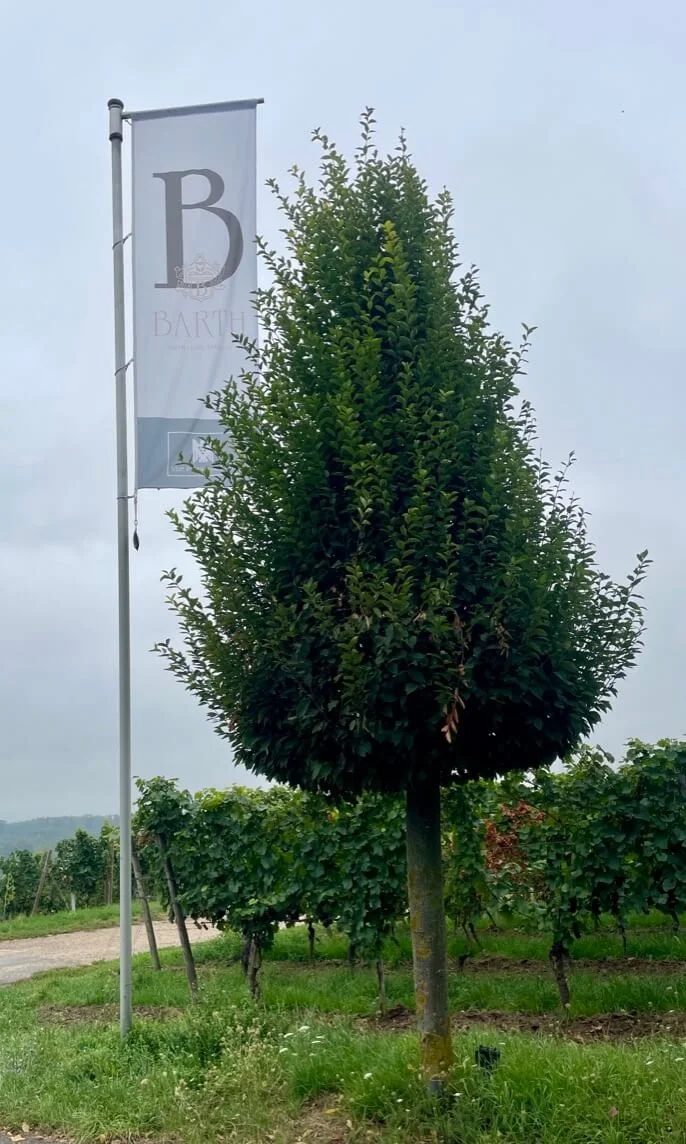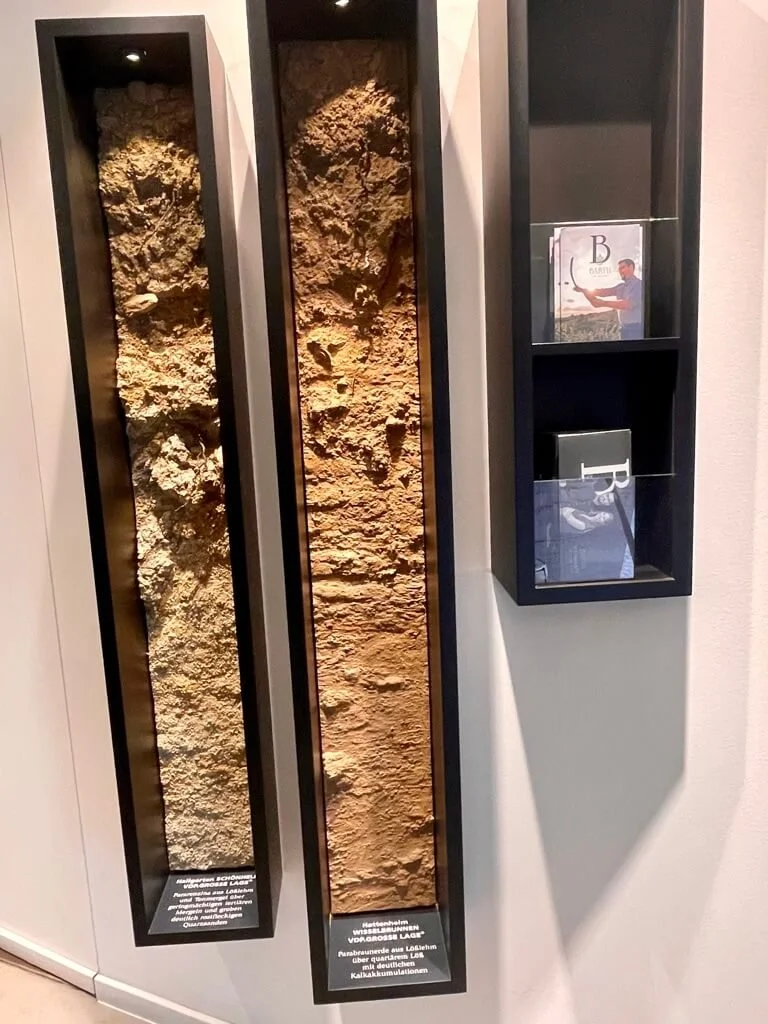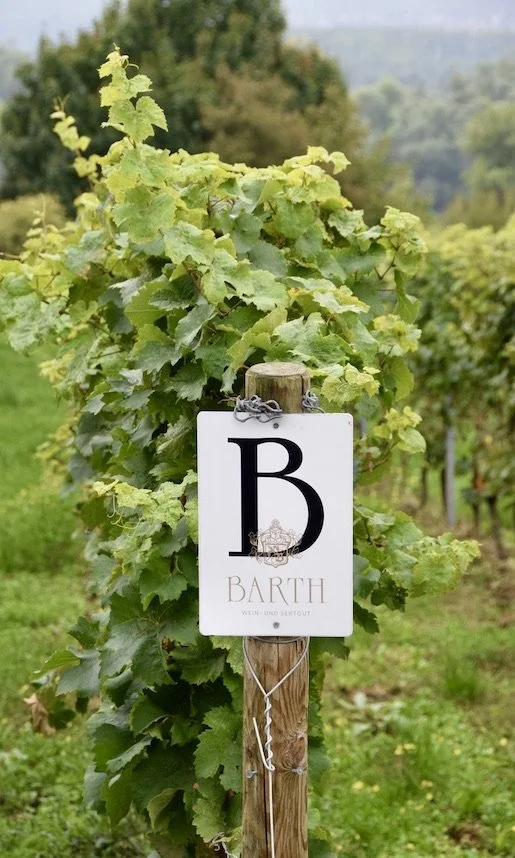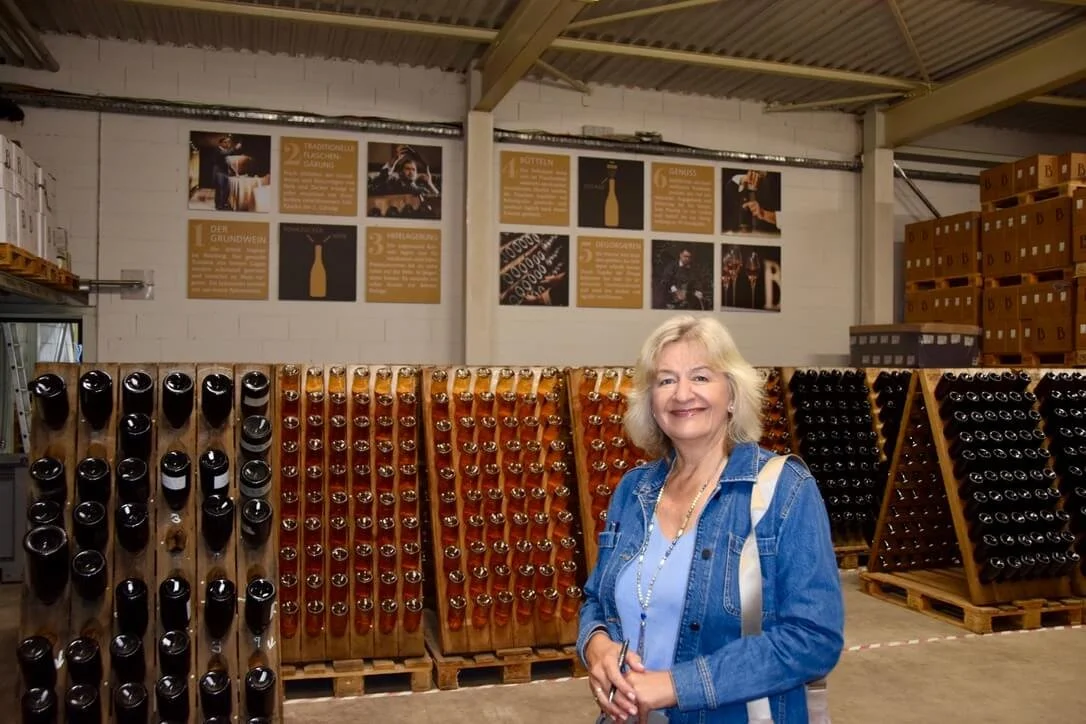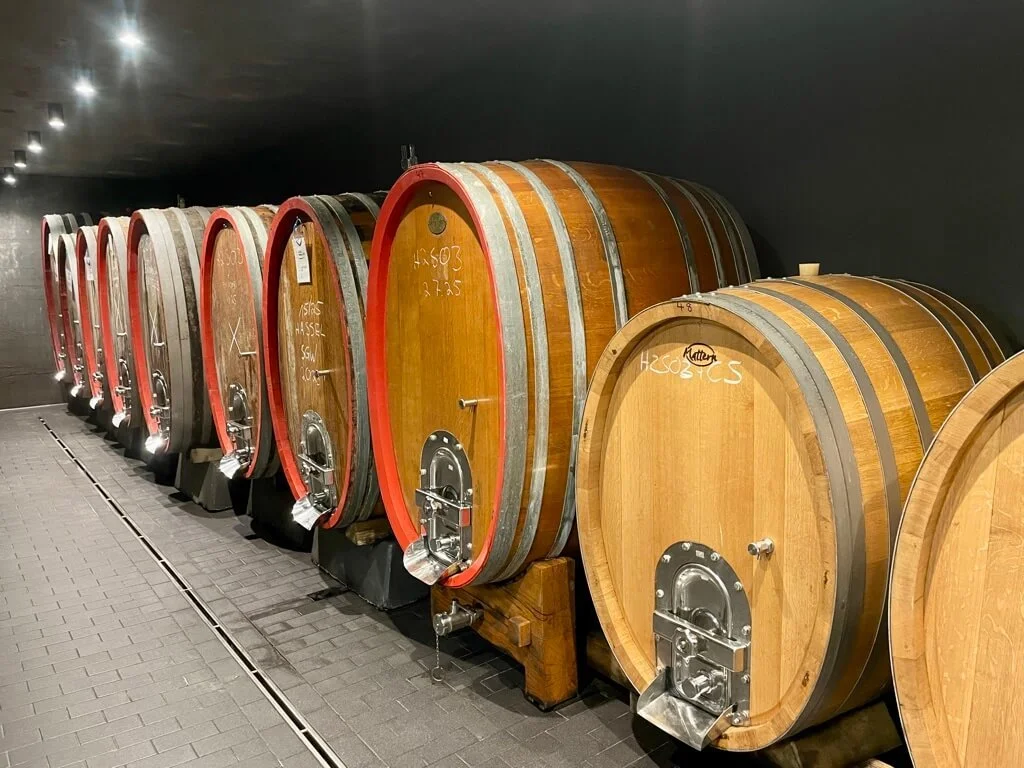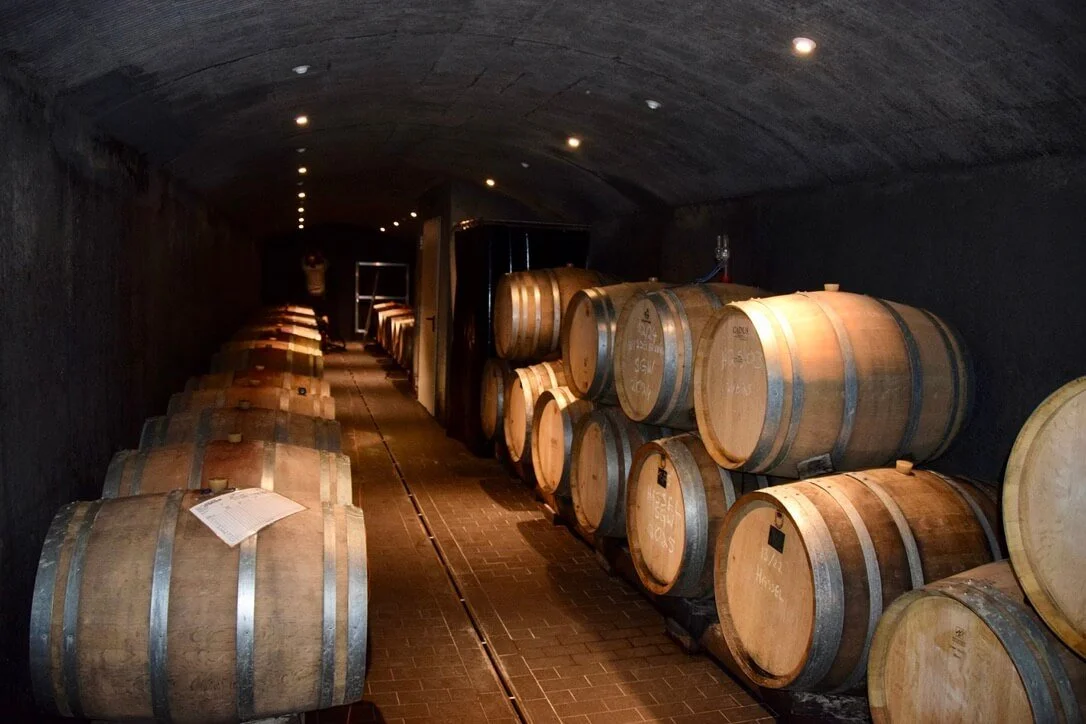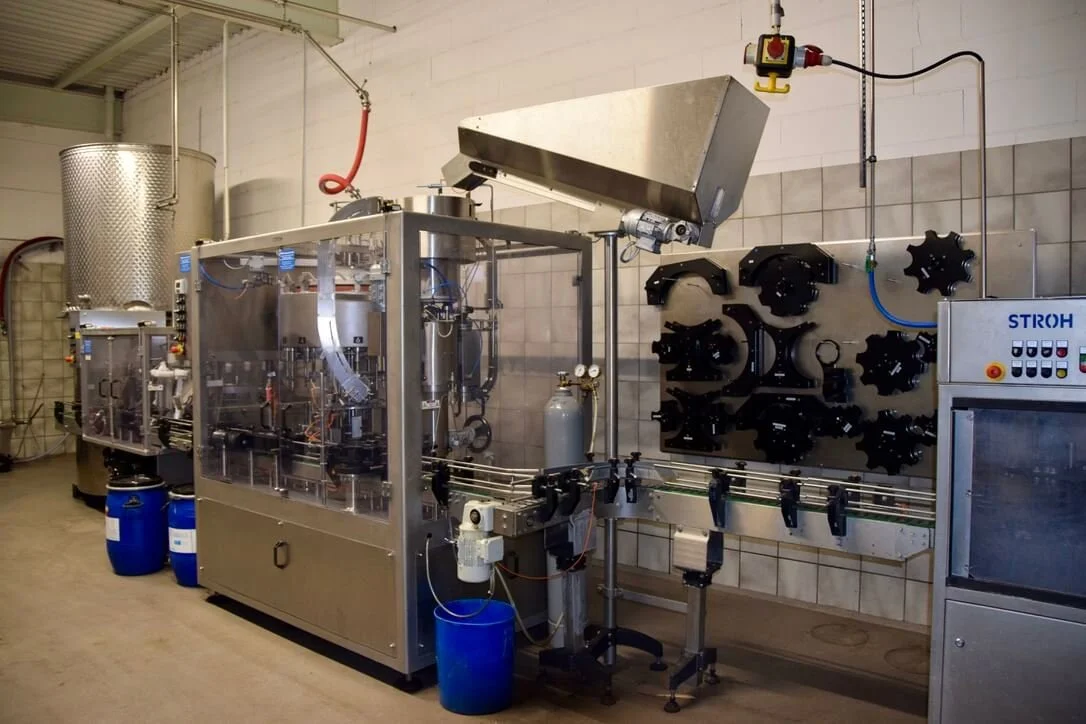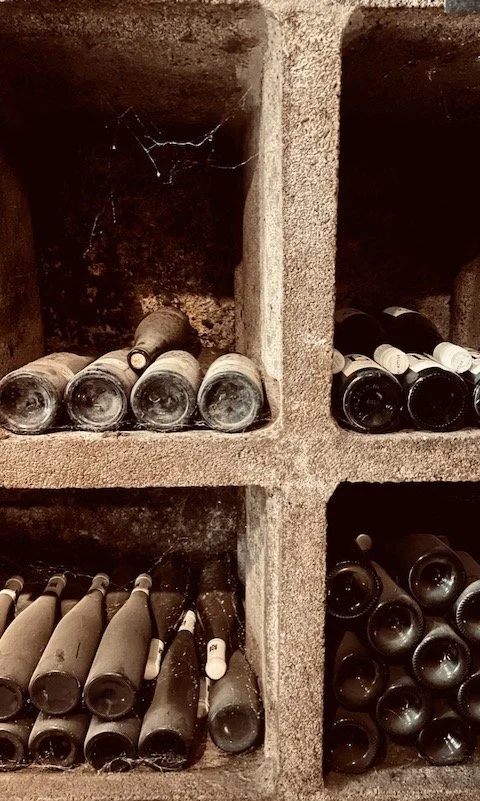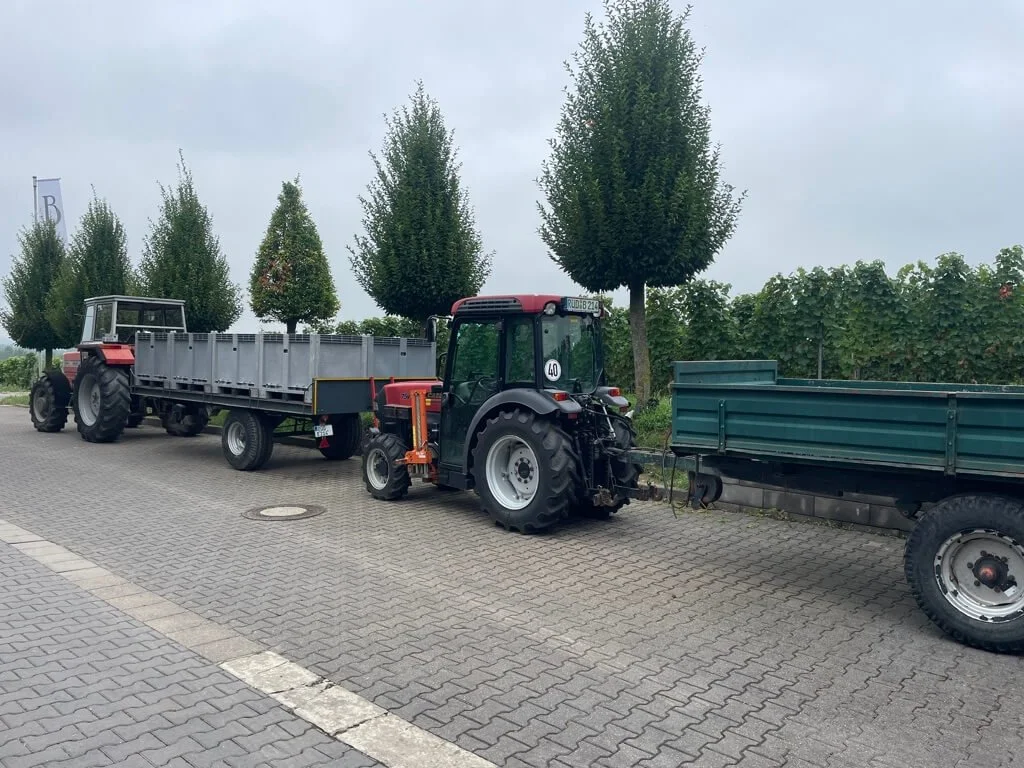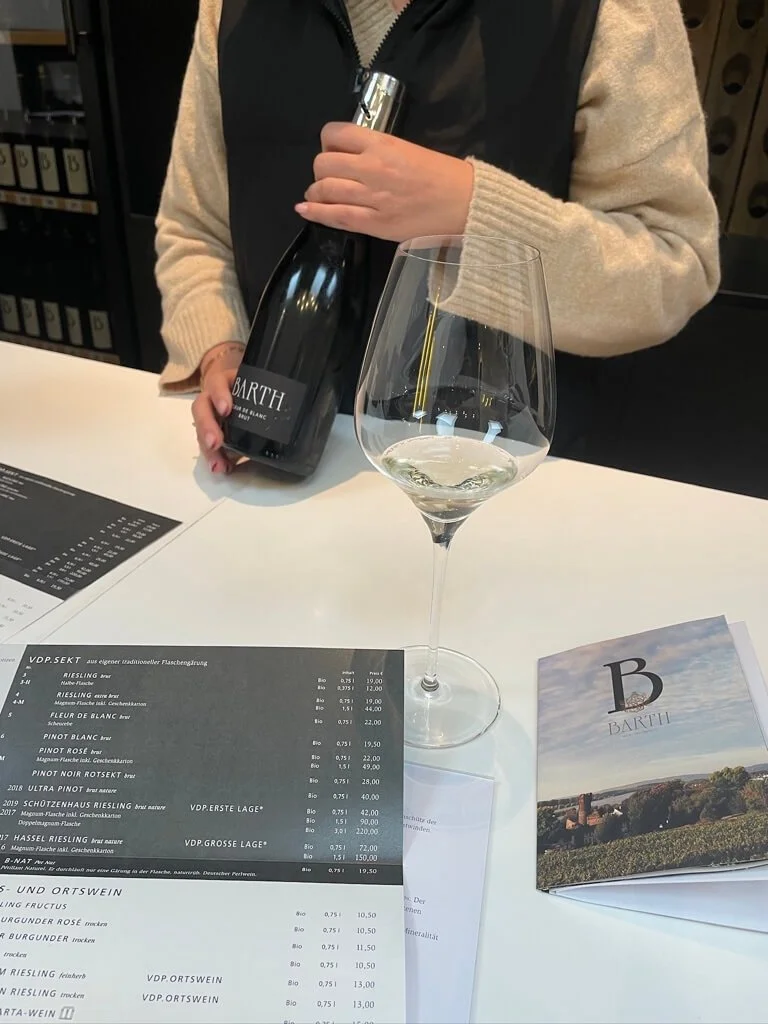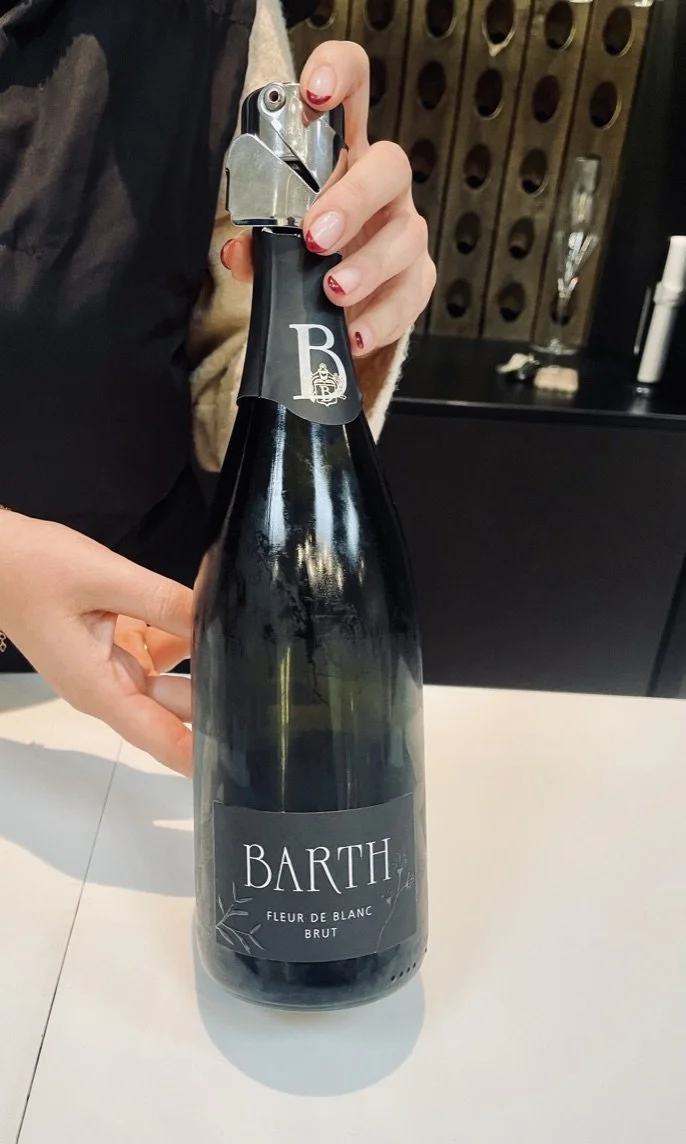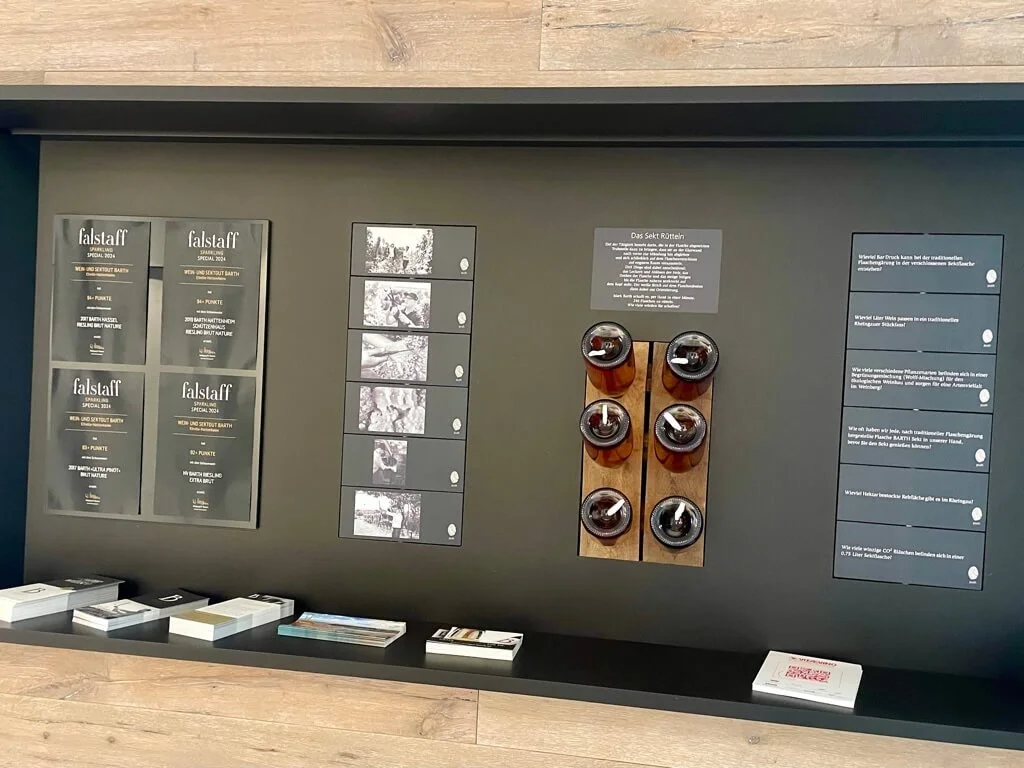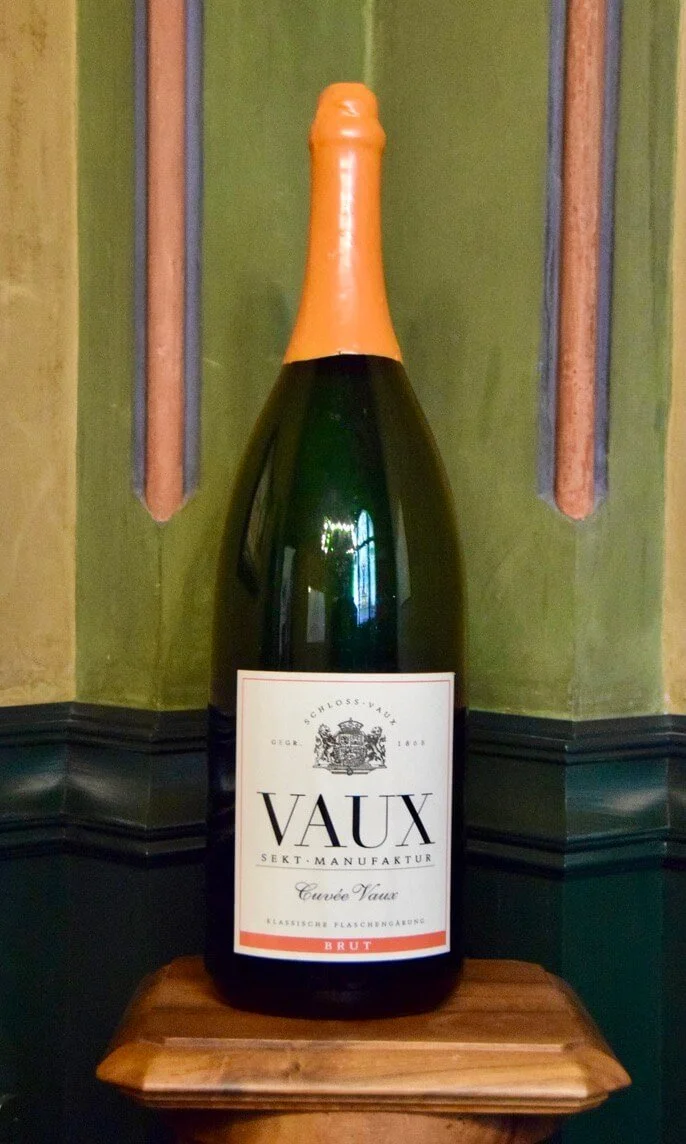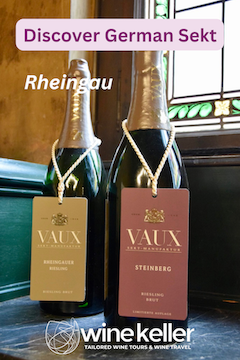Discovering Rheingau German Sekt
Uncorking the best of German sparkling wine in Germany’s Rheingau wine region, famous for its Rheingau Riesling wines
The beautiful Rheingau, Hattenheim - Source: Weingut Barth
German wine producers have a long history in producing sparkling wine - known as ‘sekt’ in Germany.
A growing number of top German sparkling sekt wines are produced today in Germany’s famous Rheingau wine region, one of the world’s oldest and most distinguished wine regions, rich in history and wine tradition. It is also the home and birthplace of German Riesling, the most well-known and respected of all German wine types.
Here we explore German sparkling sekt and visit two top German Sekt wine producers in the Rheingau wine region, Weingut Barth and Schloss VAUX.
What is German Sekt?
Sparkling wine is extremely popular in Germany and the country has a long history of producing it.
German wine producers were very involved in early Champagne production in France (think of names like Krug, Bollinger and Mumm for example) and after the 1st world war returned to Germany with that expertise, so it’s no surprise therefore that a lot of sparkling wine is produced in Germany today (see Schloss VAUX later).
The origin of the word ‘Sekt’
There is an interesting story around the origin of the name ‘Sekt’..
It was in Berlin in 1825 when it was first used in one of Shakespeare’s play where the word “sack” (the word for Sherry, a Spanish fortified wine) was translated as “sect” in German. The actor used the same word while ordering a glass of Champagne and thus, in Berlin, they started using the term Sekt for sparkling wines. It came into general in the 1890s. Later on, in 1919, when the Treaty of Versailles was signed, the word ‘Champagne’ was prohibited from being used in Germany and Sekt became the generic term in the country for sparkling wines.
Much of the sparkling wine production in Germany was and remains at the cheaper, more mass-produced end of the market, however, that said, there is a growing trend towards more premium quality ‘sekt’, made from local grapes as well as the Pinot/Burgundy grapes and made by the ‘traditional method’ involving a second bottle fermentation.
This premium sekt is our focus and is really worth discovering if you like great quality bubbles!
Traditional method, bottle fermented German sekt
The definition of German ‘Sekt’ - or Deutsche ‘Sekt’ is specifically a sparkling wine made from local grapes, whose CO2 is produced as a byproduct of secondary ‘bottle fermentation’ and which reaches a minimum of 3.5 bars of pressure, which differentiates it from a lighter ‘secco’ wine, which is marked by lower pressure levels and CO2 may be separately added.
Wines made by the ‘traditional (Champagne) method, with the secondary fermentation in the bottle, results in a more complex wine, exhibiting more rich, toasty flavours.
The process of producing a ‘traditional method’ sekt sparkling wine starts with the selection of a base wine, to which sugar and yeast are added to induce a secondary fermentation, which is a long, complex process. The wine spends a number of months maturing in a dark cellar on its lees, after which the bottles are placed neck-down into a ‘riddling rack’ known as a “Rüttelpult” in German. The bottles are rotated and tipped slightly higher each day to allow the yeast sediment to collect in the neck of the bottle and when ready, the sediment is removed or “disgorged”.
The German word ‘sekt’ isn’t a protected term, in the way that Champagne is for example, there is a wide variety of German sparkling wine styles and qualities.
To ensure you buy a top-quality ‘German Sekt’ made by the traditional method, look for the following on a bottle label:
Deutscher Sekt - confirming that 100% of the grapes in the wine come from Germany
Winzersekt - a term protected under EU sparkling wine regulations for German sekt wines sourced from estate-grown grapes from a single vintage and produced using the traditional (Champagne) method, aged on the lees for at least 9 months (also note that the abbreviation “b.A.” on the label of a German Winzersekt certifies that it comes from one of Germany’s 13 official wine regions)
The quality of German sekt continues to grow, driven by investments in high-quality sparkling wine production, the introduction of stricter production standards like the VDP.SEKT.STATUT and an increasing focus on premium, traditional method production. In fact accroding to the VDP, bottle-fermentation is obligatory for the ‘VDP Sekt label’ and the vintage version must age at least 24 months on the lees and 36 months for those labelled Prestige.
German sekt styles
The winemaker has a lot of choice in the style of sekt sparkling wine produced. Typically sekt is made from one grape variety - a ‘single varietal’ - rather than a blend. About 50% of ‘premium’ German sekt is made from the Riesling grape variety and some 30% are made from the three Pinot grapes – Pinot Noir, Pinot Blanc and Pinot Gris.
Blends, or cuvées are also common, where the winemaker can opt to blend several complementary base wines to draw out the best characteristics of both variety and vineyard. ‘Single vineyard’ sekt wines require that the base wine was grown in the named vineyard (min. 85%).
As with Champagne, there are different styles of sekt - based on the amount of residual sugar including Brut nature, Extra brut, Brut extra dry, Dry, Semi-dry and Mild and there is a growing trend toward rosé and even red sparkling wines.
Rheingau Riesling sekt
The amount and quality of sekt produced in the Rheingau region is growing, with Rheingau wineries focusing on the premium end of the market and experimenting with producing single-vineyard sekt.
In the Rheingau region the Riesling grape dominates. It’s what grows best in the soils here and German Rheingau Riesling wine triumphs in both still and sparkling sekt forms. However, some producers also focus on the more traditional Champagne style sparkling wine blends and Burgundy/Pinot grapes.
Using Riesling grapes in a sparkling sekt produces a finer, more elegant and fruit-forward flavour, with less of a toasty, yeast flavour, more prevalent in a sparkling wine using Burgundy/Pinot grapes.
Our visit to Rheingau’s Weingut Barth
Weingut Barth sekt sparkling wines - Source: Weingut Barth
Weingut Barth (or Wein-und Sektgut Barth), a family-owned Rheingau ‘wine and sparkling wine’ estate, producing top-quality sparkling wine for over 30 years, is located in the heart of some of the region’s top vineyard sites.
A member of Germany’s VDP since 1999, (representing the top German wine estates and best vineyard sites), Weingut Barth is known today for its premium-quality, traditional bottle fermentation sparkling wines, made from grapes grown in VDP-Erste Lage (Premier Cru) and VDP-Gross Lage (Grand Cru) vineyards - renowned sites such as Hattenheimer Hassel, Wisselbrunnen, Schützenhaus, Hallgartener Hendelberg and Schönhell.
Weingut Barth cultivates all of its grapes organically in its 23 hectares of vineyards from vines aged up to 50 years old. They produce about 120-130,000 bottles per year and 50% of the wine production is dedicated to sekt sparkling wine - white, rosé and red. Some 30% of wines are exported.
Weingut Barth produces a range of wines in addition to its sekt range and although most of the grapes grown on the estate are Riesling, they produce wines based on the white Scheurebe grape variety, as well as some Pinot Blanc and Pinot Noir. All wines are certified organic and are vegan.
Weingut Barth Sekt Riesling
Weingut Barth focuses mainly on the production of Riesling sekt - simply because Riesling is part of Rheingau’s identity and it grows so well here. All of the sekt is produced by the traditional method with a second fermentation in the bottle and all of the bottles are ‘riddled’ by hand. Once the bottles are resting neck-down in the ‘riddling racks’ (see earlier), all of the staff help to manually turn them each day, to allow the yeast sediment to collect in the neck of the bottle.
Our tour and tasting at Weingut Barth
Our Weingut Barth sekt tasting - Source: Winekeller
We enjoyed a fabulous tasting at Weingut Barth, which followed a tour of the winery and cellars.
We started our tasting with two amazing ‘non-Riesling’ sparkling wines, firstly the Fleur de Blanc Brut (Scheurebe grape), followed by the Pinot Blanc Brut. These were both wonderfully fresh and light sparkling wines.
We then went on to Weingut Barth’s signature sparkling wine, the Riesling Brut sekt, which was delicious and superb value for money.
Next we tasted a ‘premier cru’ wine, designated a VDP.Erste Lage site, made from grapes from the famous Rheingau Hattenheim vineyard ‘Schützenhaus’ - Schützenhaus Riesling Brut Nature, 2019. This was followed by a ‘grand cru’ wine, made with grapes from the Rheingau Hattenheim ‘Hassel’ vineyard, a VDP.Gross Lage site - Hassel Riesling Brut Nature, 2017. Wow, what incredible wines! These were both truly delicious, premium quality sparkling wines.
We ended our tasting with the Pinot Noir Brut wine, which we loved and finally, a Barth flagship wine - the Ultra Brut Nature, a Blanc de Noir sparkling wine (our favourite), made from Pinot Noir, which is left to rest on the yeast for more than 60 months, more than any other of the Barth sparkling wines. This wine has a beautiful freshness, with lots of fine bubbles, balanced with a mature complexity - what a great wine!
We encourage you to visit Weingut Barth for a tasting if you visit Germany's Rheingau, or search for availability of their wines in your own country. Weingut Barth is a great example of a family-owned Rheingau winery, championing the regional Riesling grape, but experts in producing premium, traditional method sekt sparkling wines.
Our visit to Schloss VAUX in Eltville am Rhein, Rheingau
The pretty wine village of Eltville am Rhein is known as the ‘Sekt and Rosen Stadt’ - the sekt and rose town - and one of the top and most established sekt producers located here, is Schloss VAUX.
Schloss VAUX in Eltville am Rhein, Rheingau - Source: Winekeller
Schloss VAUX is proud of its 150 years tradition of making premium sparkling wine.
Founded in 1868 in Berlin, Schloss VAUX is 100% focused on producing traditional method sparkling wine. Schloss VAUX isn’t a VDP winery, as in the most part it doesn’t use its own estate grapes to make its sparkling wine, but it buys in grapes from 6 partner vineyards across the German wine regions of Rheinhessen, Pfalz and Nahe.
Schloss VAUX does however own 7 hectares of owned vineyards in Geisenheim in Rheingau (see later).
Schloss VAUX specialises in the process of making premium, traditional method sekt sparkling wine in its winery in Geisenheim, producing some 450,000 bottles per year, most of which is consumed within Germany.
Schloss VAUX History
Schloss VAUX has a long history.
After being founded in Berlin, ‘Château VAUX’ near Metz on the Moselle River, was acquired and the production of German sparkling wine commenced. Forced to abandon production here after the first world war, when Metz became part of France, new headquarters were established in the Rheingau region, in the village of Eltville am Rhein. The name ‘Chateau VAUX’ - or ‘Schloss VAUX’ in German, was retained and remains today.
The next step in the history of Schloss VAUX came in 1982, when a small group of friends purchased Schloss VAUX and the company prospered under the leadership of Gustov Adolf Schaeling. Count Nikolaus von Plettenberg led the sparkling wine producer from 1998 to 2021 and Christoph Graf has been the CEO since 2022.
Today Schloss VAUX is a public limited company with over 60 different shareholders, the major shareholder being Chairman, Prince Michael zu Salm-Salm.
The 7 hectares of vineyards in Geisenheim, Rheingau, were purchased in 2014, representing another significant milestone in the history of Schloss VAUX - these vineyards were certified organic in 2023.
The next stage of history is currently being written with the development of new premises by the Rhein in Eltville, delivering additional space to welcome visitors and to hold tastings and events. These new premises are set to open in October 2026.
VAUX sparkling wine
Schloss VAUX is focused purely on producing sekt sparkling wines by the traditional fermentation method, using a variety of grapes, including the traditional Champagne grapes of Pinot Noir, Chardonnay and Pinot Blanc. The signature style is not to copy that of ‘Champagne’ but to create a sparkling wine where the fresh, fruity flavours are in the foreground - perhaps something in between a French and a German style (reflecting the Schloss VAUX history).
Schloss VAUX has two core wine collections, one being the wines produced from grapes grown in the partner vineyards and the other, a more recent venture, under the name ‘L’Artiste’ wines, made with grapes from the Rheingau vineyards purchased in 2014.
Schloss VAUX Cuvée Sekt
The flagship wine is ‘Cuvée VAUX’ - 70% Pinot Noir/Chardonnay/Pinot Blanc and 30% Riesling - it is left for 15 months on the lees and fermented in stainless steel vats.
This beautiful sekt sparkling wine was first produced in 1999 and remains hugely popular today, with about 130,000 bottles produced each year. The Burgundy/Champagne grapes give the wine its creaminess, with not too much acidity and the Riesling gives it a distinctive freshness and fruitiness.
We tasted the 2023 vintage and it was superb.
We also tasted the lovely ‘Cuvée Rosé’ - 60% Pinot Noir, 40% Pinot Blanc/Chardonnay - it is left on the lees for 24 months. Some 90,000 bottles are produced each year.
‘L’Artiste’ - Rheingau Sekt VAUX
The L’Artiste wines from Schloss VAUX represent an eye towards the future direction. The L’Artiste Brut wine is 100% Riesling, 48 months on the lees, aged in steel and oak. The L’Artiste Rosé is made from Pinot Noir grapes.
Again, superb, great gastronomy wines.
We also had the good fortune to taste the wonderful Erbacher Marcobrunn Riesling wine which is made with grapes from low-yield, old vines and 54 months on the lees.
We enjoyed a superb tasting at Schloss VAUX and we look forward to returning when the new visitor premises are open, to learn more about Schloss VAUX, a top sekt sparkling wine producer, with 150 years of expertise and tradition to draw on. Learn more here.
Conclusion
There is no doubting the quality of German sekt and if you haven’t tried it before, make it your mission to seek it out! You certainly can’t go wrong with a sekt from Germany’s famous Rheingau region and we can really recommend visiting to discover sekt in more depth. Our visits to Weingut Barth and to Schloss VAUX were certainly top-class and we can highly recommend.

